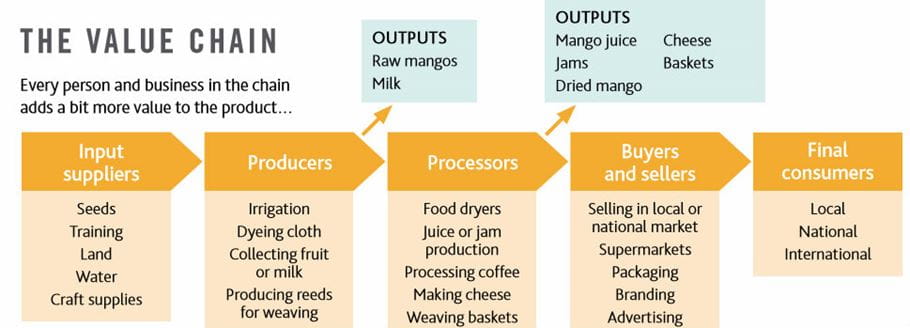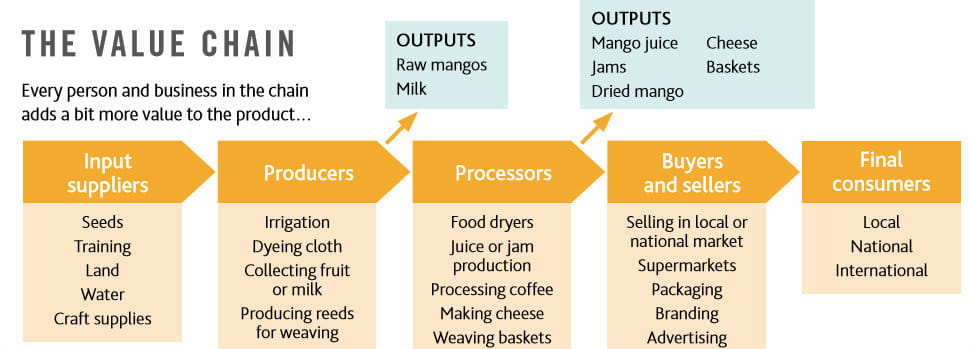By Kara Greenblott, Isabel Carter and Debora Randall
Have you ever wondered why jam usually costs so much more to buy than raw fruit? Or why woven baskets are more expensive than reeds?
There are different steps involved in changing a raw material into a finished product ready for sale. This process is known as the value chain. At every stage in the value chain, the product typically gains value (see diagram below).
Thinking through the value chain can help people to see if there are ways of adding value to the products they are selling. For example, milk can be processed to make butter and cheese. Different products can be combined to make a higher value product, such as bread or street food. As long as the cost of processing is less than the added value, then there should be an increase in profit.
There may also be opportunities to increase profit without changing the product. For example, it may be possible to cut out one of the links or to make the product move along the chain more efficiently. By working together to purchase raw materials or to sell products, producers may get better prices and increase their profits. By simply storing raw materials for a while, the seller may get a much better price for the product out of season.
Location also affects value. Selling in alternative markets (usually further away) may significantly increase profits.










